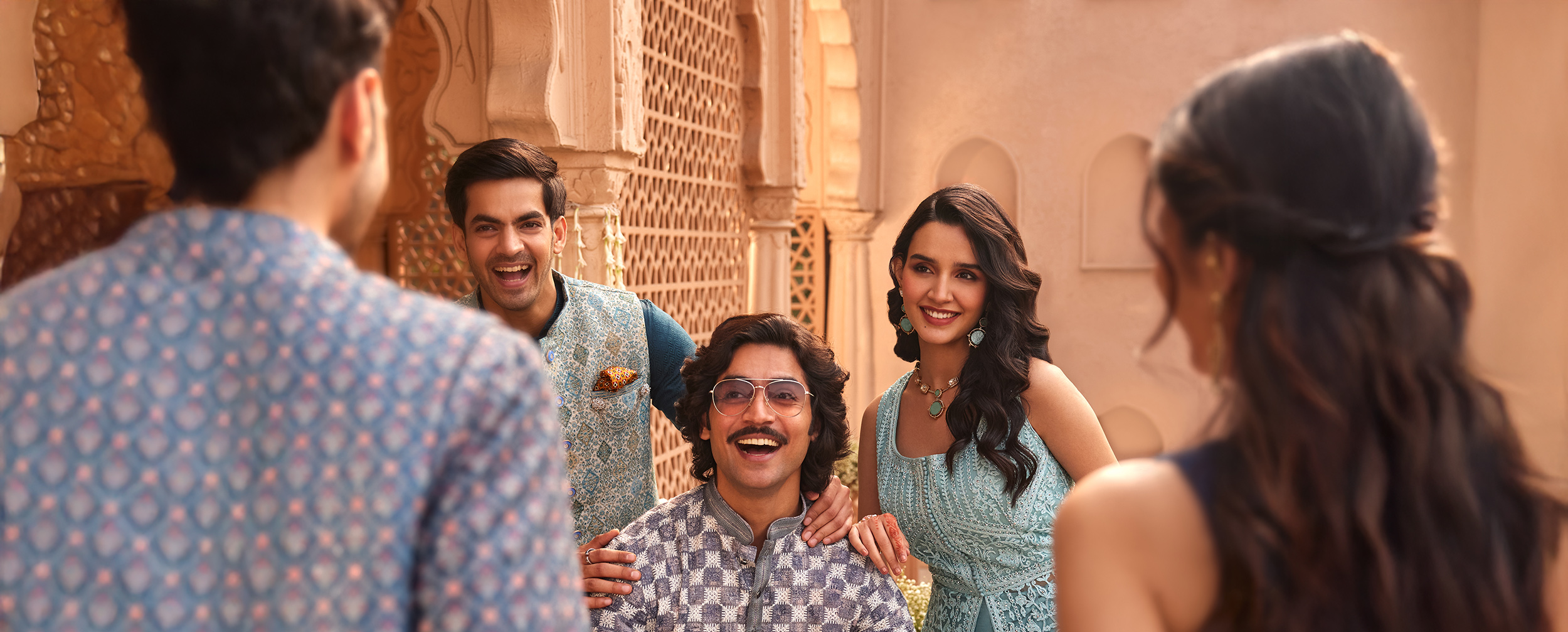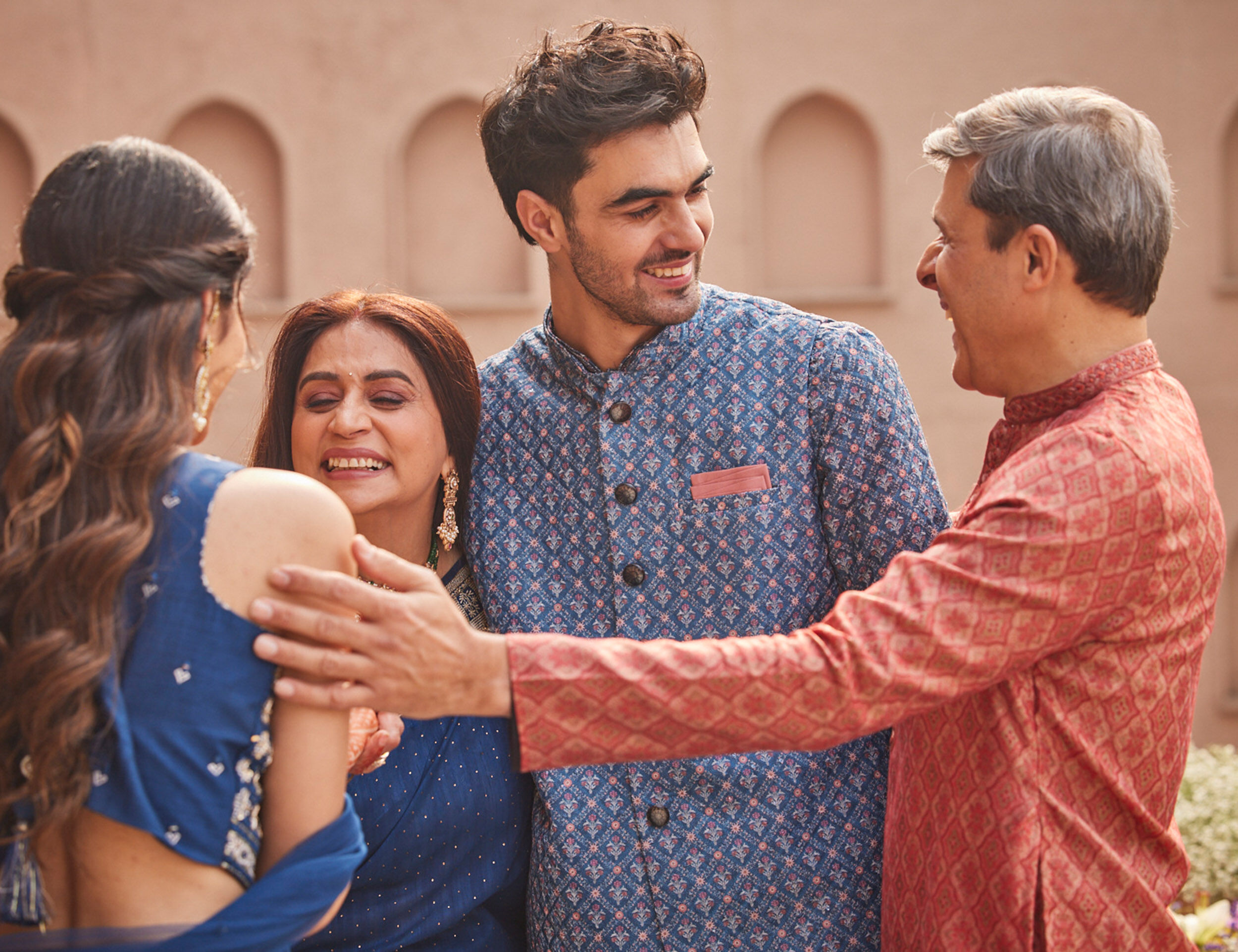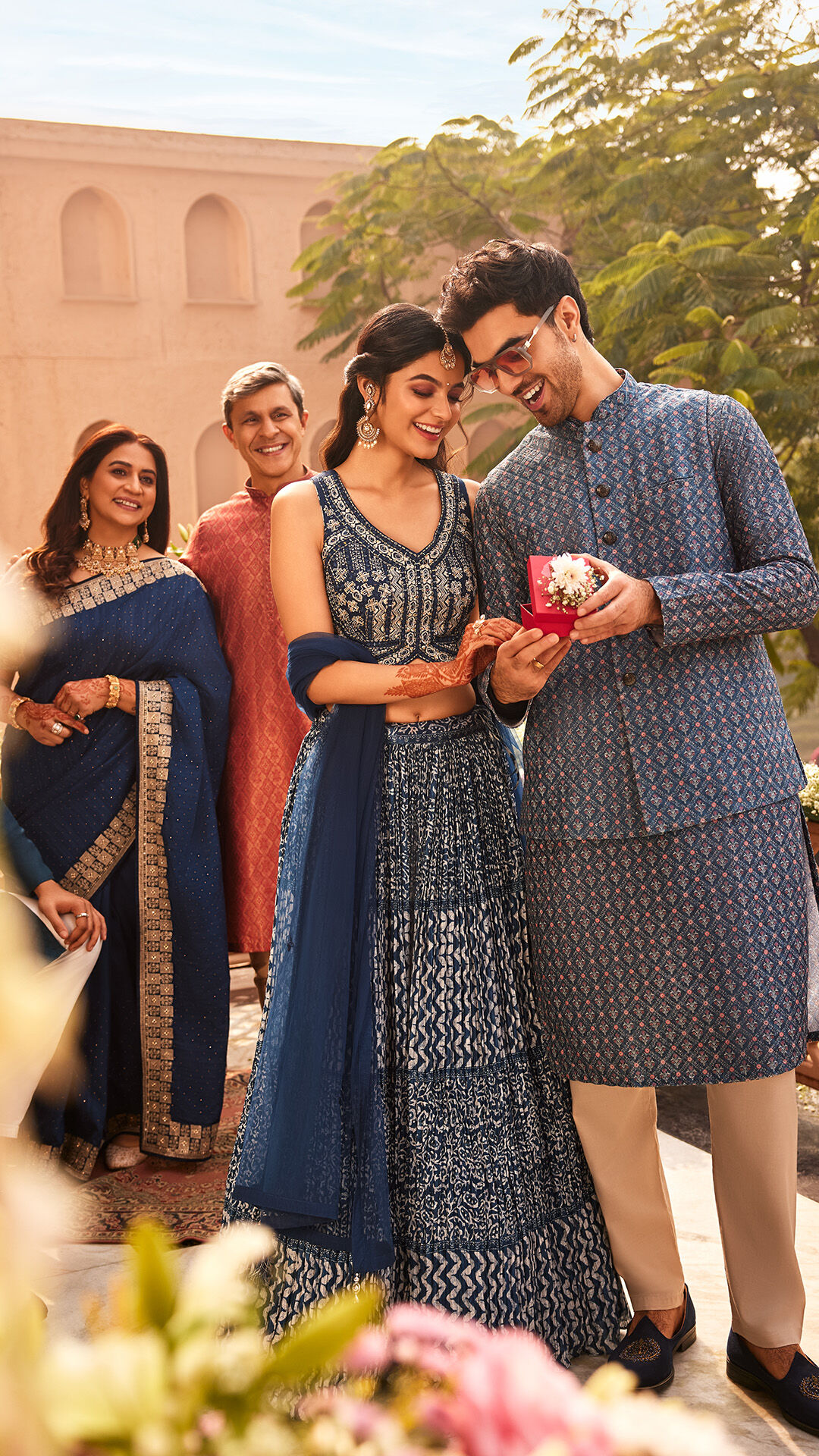STORIES BY MANYAVAR & MOHEY

Lifestyle
Unveiling the Magic of the Roka Ceremony in Indian Weddings
Date 29 September 2025 Reading time: 7-10 mins
Picture this: A gathering of loved ones, the air thick with anticipation and joy. At the centre of it all, a couple, their eyes locked, their smiles radiant. This is the essence of the Roka ceremony, a beautiful Indian wedding tradition that marks the official beginning of a couple's journey towards marriage.
In a world where weddings are often grand, multi-day affairs, the Roka ceremony stands out as a more intimate, yet deeply significant event. It's a moment when two families come together, not just to celebrate the union of two hearts but to bless the couple and wish them a lifetime of happiness.
What is Roka Ceremony?
What is roka ceremony? In simple terms, the roka ceremony is a pre-wedding ritual that signifies the formal announcement and acceptance of a marriage alliance between two families.
The Roka ceremony meaning is rooted in the Hindi word "rokna," which translates to "to stop." In the context of this ceremony, it symbolises that the bride and groom have found their life partners, and their families have agreed to stop searching for other potential matches.
This pre-wedding ritual is particularly significant in Punjabi and other North Indian communities. It's a way for the couple to officially announce their intention to marry, and for their families to give their blessings.
The Origin and History of the Roka Ceremony
What is roka ceremony's history? The Roka ceremony has its roots in ancient Indian traditions. In the past, marriages were often arranged by families, and the Roka was a way for them to formalise the engagement and begin wedding preparations.
Over time, as love marriages became more common, the Roka ceremony evolved. Today, it's not just about two families agreeing to a match but about celebrating the couple's love and their decision to spend their lives together.
The Significance of Roka Ceremony in the Indian Weddings
What is roka ceremony in Hindi? रोका (roka) holds immense significance in the grand tapestry of Indian weddings. More than just a formality, it is a sacred ritual that binds two hearts and their families in a lifelong bond. Let's delve deeper into why the roka ceremony is so important:
The Rituals Involved in the Roka Ceremony
The Roka ceremony usually takes place at the bride's home, in the presence of close family and friends. The rituals may vary slightly across regions and communities, but the core elements remain the same.
- Tilak Ceremony: The families apply tilak (a mark of vermilion or sandalwood paste) on the foreheads of the bride and groom, symbolising their engagement and the beginning of a new chapter.
- Chunni Ceremony: In Punjabi traditions, the mother-in-law drapes a chunni (a decorative scarf) over the bride's head, welcoming her into the family.
- Gift Exchange: The families exchange gifts, typically including sweets, fruit baskets, and clothing, to strengthen their bond.
The Role of Family in Roka Ceremony
What is roka ceremony's importance when it comes to family? The Roka ceremony is as much about the families as it is about the couple. It's a time for the two sides to come together, get to know each other, and to build a foundation of love and respect.
The parents, grandparents, and siblings of the bride and groom play a central role in the ceremony. They offer their blessings, share stories and advice, and revel in the joy of the occasion.
The Importance of Gifts in the Roka Ceremony
Gifts are an integral part of the Roka ceremony meaning they're not just material items but symbols of love, respect, and the joining of two families.
The groom's family usually brings gifts for the bride which include indo-western wear for women, beautiful sarees, gorgeous lehengas, or jewellery. The bride's family reciprocates with gifts for the groom, often including a regal sherwani, kurta pajama, or other traditional attire like kurta for men paired with fitted lower.
How is the Roka Ceremony Celebrated Today?
What is roka ceremony's celebration like today? While the essence of the Roka ceremony remains unchanged, its celebrations have evolved with the times. Today's Roka ceremonies often blend traditional rituals with modern twists, reflecting the couple's unique style and preferences.
Modern Interpretations of the Roka Ceremony
- Themed Decor: Many couples choose to incorporate a theme into their Roka decor, from floral fantasies to Bollywood glam. It's a way to personalise the event and create a memorable ambience.
- Fusion Fashion: While traditional attire is still popular, many brides and grooms opt for fusion looks that combine Indian and Western elements. A bride might pair a modern palazzo with a choli-style crop top or opt for a classic bridal saree, while a groom might rock in a dark bandhgala suit with sneakers.
- Interactive Elements: From live music to photo booths, couples are adding interactive elements to their Roka ceremonies to engage guests and create a festive atmosphere.
- Personalised Favours: Forget generic sweets – today's Roka favours are all about personalisation. Think monogrammed cookies, mini succulents, or even custom-blended teas.
Understanding Your Roka Ceremony's Importance
What is roka ceremony meaning? It is the first step in a sacred journey, a promise of eternal love and commitment. Whether you choose to keep it traditional or add a modern twist, the essence of the roka ceremony lies in the coming together of hearts and families.
From what is roka ceremony in Hindi to its modern-day celebrations, this timeless tradition continues to hold a special place in the hearts of Indian couples and their families. It's a beautiful testament to the power of love, the strength of family, and the magic of new beginnings.
So, here's to your Roka ceremony – may it be filled with laughter, love, and the promise of a beautiful future together. And as you embark on this exciting journey, remember that Manyavar and Mohey are here to make your wedding dreams a reality with their exquisite collection of traditional and contemporary Indian wedding wear.







